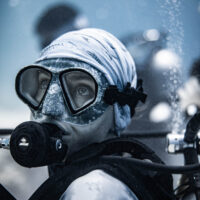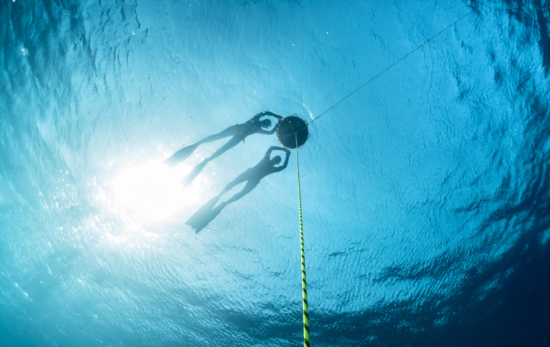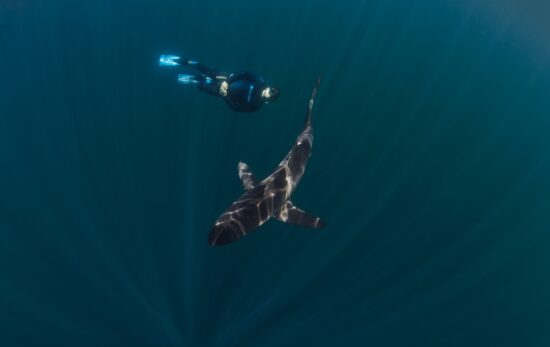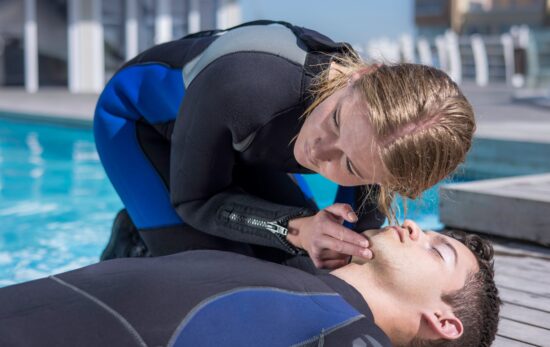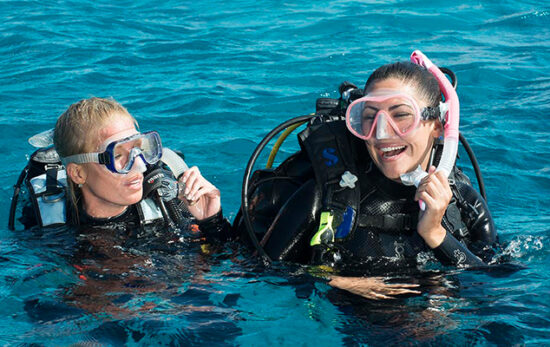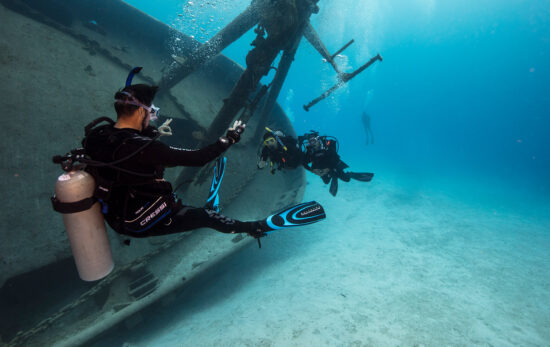Freedivers train for freediving by practicing various techniques to improve their breath-hold, physical fitness and mental preparation. This can include static apnea training, where the diver holds their breath while floating on the surface of the water; dynamic apnea training, where the diver swims horizontally while holding their breath; and depth training, where the diver descends to depth while holding their breath. They also train on proper diving techniques, such as equalization, entry and exit techniques and streamlining. In addition, freedivers practice relaxation and mindfulness techniques to reduce anxiety and improve breath hold time while diving.
Below you will learn about some freediving training tips that may be used throughout your practice sessions. These lists of tips might sound very similar to one another, but each of them have their own advantages. As you read, it is also important to note that all freediving training should always be done under the supervision of a qualified instructor or a trained buddy and safety protocols should be strictly followed. As with all freediving training, it’s important to listen to your body and not to push yourself too hard. With practice and patience, you can improve your breath-hold abilities and make your freediving experience more enjoyable and safe. Now, let’s dive a little deeper and discover what it’s really like to train as a freediver!
For these freediving training tips, it is important to note that each of these skills takes time and practice to master. Be patient with yourself and work on these freediving techniques gradually! Don’t hesitate to seek the guidance of a qualified instructor and always dive with a trained buddy.
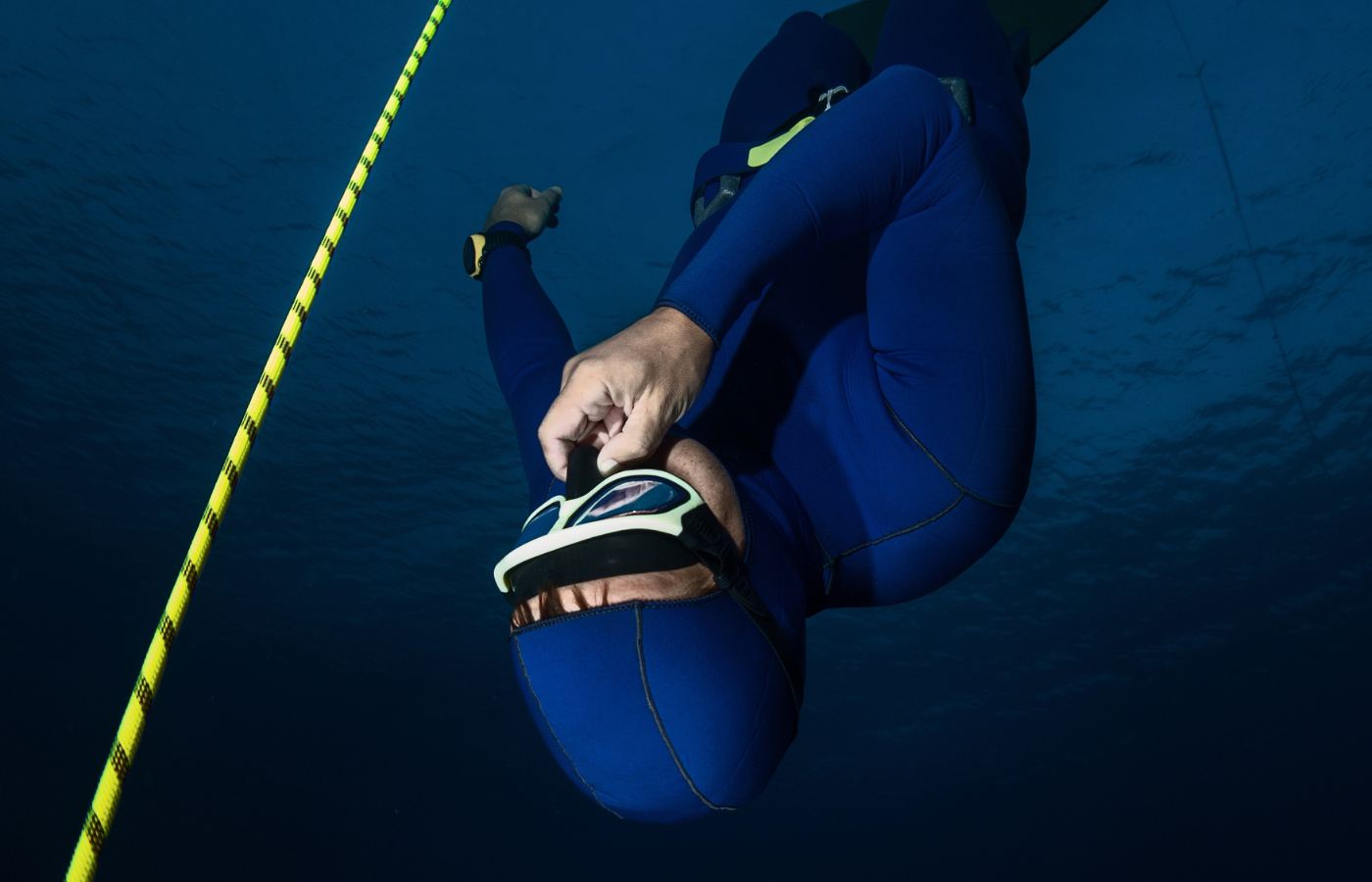
Equalization
Equalization is a technique used by divers to equalize the pressure in their ears and sinuses as they descend underwater. This is important to prevent freediving injuries like barotrauma, which is damage to the ears or sinuses caused by the changes in pressure at depth.
Here are some tips for practicing equalization during freediving training:
- Try to learn different equalization techniques, such as the Valsalva , or the Frenzel maneuvers, , and find the one that works best for you. For deeper dives you will most likely need to use the Frenzel technique so the sooner you begin to master this technique, the better.
- Start by equalizating on the surface before descending. This will help you ensure that you can indeed equalize and help you stay one step ahead of the need to equalize on your way down.
- Try to stay relaxed and calm while equalizing, as tension in the muscles can make equalization more difficult.
- Use a trained buddy or instructor to check your equalization technique and to help you practice.
- Always make sure to stretch, including your neck and throat before diving and to be well hydrated, as this can help to prevent congestion.
- Always follow the safety protocols, and never push yourself beyond your limits.
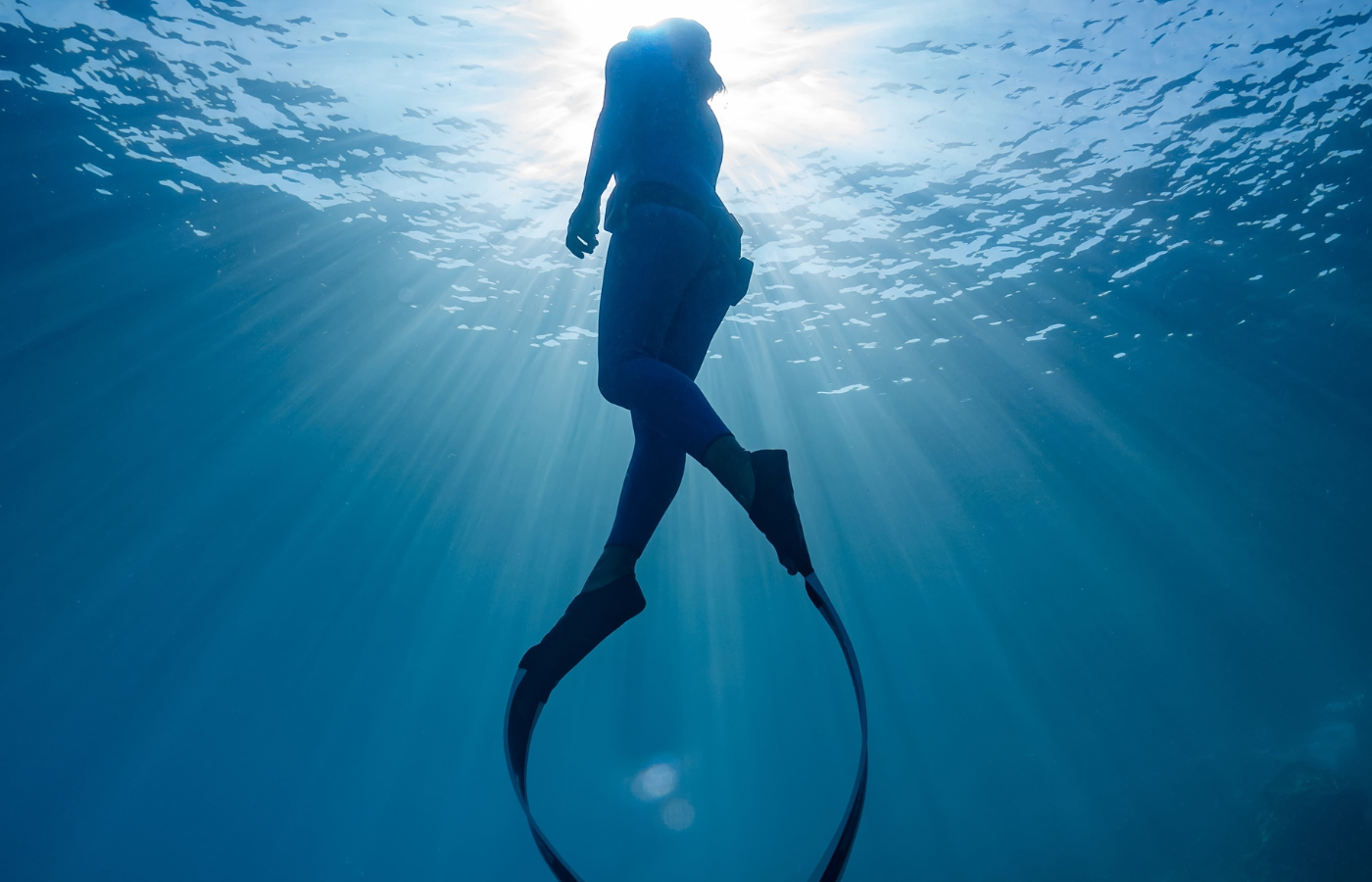
Proper Weighting
Proper weighting is an important skill for freedivers to master, as it helps freedivers avoid being overweighted. Here are some tips for determining your proper weighting:
- In all cases in open water freediving, you should float comfortably at the surface after exhaling. In some cases, this may mean you will wear less weight than you would otherwise.
- A common philosophy is that neutral depth should be approximately one-third your planned maximum depth, or at 5 meters/15 feet, whichever is deeper. The reason for the one-third or 5 meters/15 feet guideline is so you’re buoyant in the range where most blackouts occur. Some freedivers advocate different neutral buoyancy depths. One half the maximum depth, and 10 meters/30 feet are also commonly used.
- Setting your weight is a trial-and-error process but begin by putting on all your gear and a small amount of weight. Exhale fully, but passively. You should still be floating on the surface. If you sink, remove some of the weight and repeat the check.
- Freedive (free immersion) to the desired neutral buoyancy depth, stop and relax. If you’re properly weighted, you should remain at the same depth, neither sinking or rising, without using your hands or feet to stay there. If you rise or sink more than very slightly, adjust your weight and try again. Make changes in .5-1 kg/1-2 lb increments.
- For dynamic apnea, you want to be neutrally buoyant (you neither float or sink) at the depth you will swim. This means that you will generally use more weight than you use in open water.
- Estimate the weight you will need and position it evenly on a belt or use a neck weight to disperse the weight across your body.
- Submerge and push off into a streamlined position. Don’t kic, instead glide. If weighted correctly you should remain at the same depth. If you sink or ascend, add or subtract weight as needed.
- Always follow the safety protocols and never push yourself beyond your limits.

Streamlined Body Position
A streamlined body position is a technique used by freedivers to improve their hydrodynamics while swimming underwater. A good streamlined body position can help to reduce drag and improve efficiency while diving. It will also help conserve energy and make the dive more comfortable. Here are some tips for practicing and improving a streamlined body position during freediving training:
- Start by practicing on the surface before descending. This will help you to get used to the feeling of being streamlined and to develop a consistent technique.
- Practice with your arms in a different positions to find the technique that works bets for you. This could be one arm up in front of you like superman, both arms along your side or both arms up over your head.
- Practice controlling your body position while swimming horizontally and vertically.
- Try to stay relaxed and calm while diving, as tension in the muscles can make it more difficult to maintain a good body position.
- Use a trained buddy or instructor to check your body position and to help you practice. You can have them film you so you can review your technique personally as well.
- Practice diving in different conditions, such as currents, waves and different temperatures of water, as this will help you to adapt to different environments.
- Always follow the safety protocols and never push yourself beyond your limits.

Relaxation and Mindfulness
Relaxation and mindfulness techniques are important for freedivers to practice, as they can help to reduce anxiety and improve focus while diving. Here are some tips for practicing relaxation and mindfulness techniques during freediving training:
- Practice mindfulness techniques, such as meditation, yoga and tai chi, which can help to improve focus and concentration.
- Incorporate relaxation and mindfulness techniques into your pre-dive routine to help you to stay calm and focused before a dive.
- Practice visualization techniques, such as imagining a peaceful underwater scene, which can help you to relax and stay calm while diving.
- Try to stay present and focused on the dive and avoid distractions, such as unnecessary thoughts and worries.
- Practice regularly, both before and after diving to make it a habit.
- Incorporate these practices in your daily life, not only when you are about to dive.
- Always make sure to have stretching session before diving and to stay well hydrated.
- Always follow the safety protocols and never push yourself beyond your limits.

Potential Risks That Can Occur Without Proper Training
Freediving is a fun and exhilarating activity that allows individuals to explore the underwater world. Also, being a freediver allows you to connect with nature in a unique way. The feeling of weightlessness and the sense of freedom that comes with diving without the use of heavy equipment can be very enjoyable.
However, it is important to follow safety procedures while freediving, as it is a sport that carries some inherent risks. Freediving is a demanding activity that puts a lot of stress on the body and the mind, and it is essential that the divers are well-trained and properly equipped to handle these challenges.
One of the main risks in freediving is blackout, which is a loss of consciousness due to lack of oxygen. This can happen if a diver holds their breath for too long, or is not properly trained in how to manage their breath hold. This is just one of the several risks covered in the PADI Freediver course. It is important to follow safety procedures to minimize the risks and to make the diving experience as safe and enjoyable as possible.
Ready to dive in? Learn more about the PADI Freediver course and get started today!
